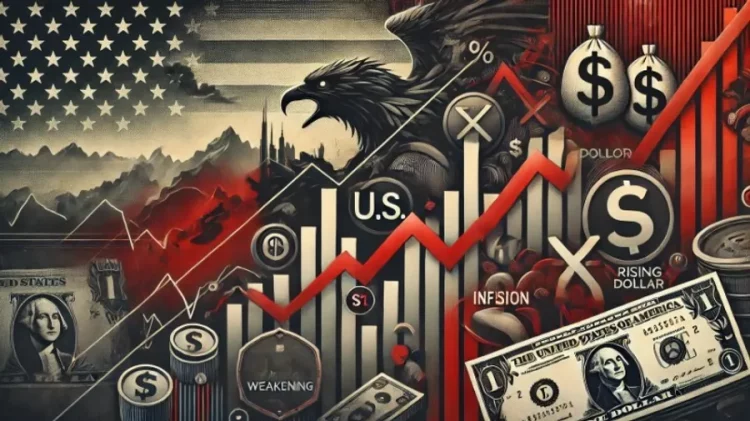Introduction
Economic policies in the United States and Europe have long been a focal point for investors, policymakers, and analysts due to their significant influence on global markets. While both regions are considered economic powerhouses, their economic policy frameworks diverge in several key areas, such as monetary policy, fiscal policy, regulation, and trade strategies. These differences can have profound impacts on global financial markets, influencing everything from exchange rates to capital flows, investment decisions, and economic growth prospects across the world.
In this article, we will explore how the economic policy differences between the U.S. and Europe shape global markets, examining the consequences of these disparities in areas such as interest rates, government spending, regulatory approaches, and trade policies. By understanding the dynamic interactions between U.S. and European economic policies, investors and market participants can better navigate the complexities of the global financial landscape.
Section 1: Monetary Policy Divergence
1.1 The Federal Reserve’s Approach vs. The European Central Bank
Monetary policy is one of the most influential tools available to central banks for shaping economic conditions. The Federal Reserve (Fed) in the United States and the European Central Bank (ECB) in the Eurozone employ different approaches to monetary policy, driven by the distinct economic conditions and priorities in each region.
- The Fed’s Aggressive Interest Rate Policies: The U.S. Federal Reserve has historically adopted a more aggressive stance on interest rates, adjusting them rapidly to address inflation, unemployment, and economic growth. For example, in response to rising inflation in the wake of the COVID-19 pandemic, the Fed raised interest rates at a swift pace starting in 2022. The Fed’s primary focus is often on controlling inflation and ensuring a healthy labor market. These policies can lead to stronger movements in the U.S. dollar and significantly influence global liquidity.
- The ECB’s Cautious Approach: In contrast, the European Central Bank has historically been more cautious when it comes to raising interest rates, often prioritizing economic growth and the stability of the Eurozone over inflation control. The ECB’s approach reflects the diverse economic conditions within the Eurozone, where some countries experience low inflation and low growth, while others, like Germany, have more stable inflation rates. The ECB’s slower rate hikes compared to the Fed have often meant lower interest rates in the Eurozone, creating divergent economic conditions between Europe and the U.S.
- Global Impact of Divergent Policies: The divergent approaches to monetary policy between the U.S. and Europe can cause fluctuations in the value of the euro and the U.S. dollar. A stronger dollar due to Fed interest rate hikes can make U.S. exports more expensive, potentially slowing down U.S. economic growth but attracting foreign investments into U.S. assets. On the other hand, a weaker euro resulting from ECB’s cautious monetary tightening could benefit European exporters but also signal economic weakness within the Eurozone, potentially causing a shift in investor sentiment and capital flows.
1.2 The Impact on Global Capital Flows
The difference in interest rates between the U.S. and Europe influences the flow of capital around the world. As investors seek higher returns, they often flock to markets where interest rates are higher, such as the U.S. during periods of Fed rate hikes. This can lead to:
- Capital Inflows to the U.S.: Higher U.S. interest rates attract global investors, increasing demand for U.S. government bonds, equities, and dollar-denominated assets. This can result in higher asset prices and potentially lower borrowing costs in the U.S., although it may also lead to higher volatility in emerging markets.
- Capital Outflows from Europe: Conversely, lower interest rates in Europe, particularly when the ECB is less aggressive in tightening policy, may drive capital outflows as investors seek higher returns in the U.S. or emerging markets. This capital flight can undermine the stability of European financial markets and lead to increased market volatility.
Section 2: Fiscal Policy Differences
2.1 Government Spending and Debt Management
Another key difference between the U.S. and Europe lies in their fiscal policies, particularly their approach to government spending and debt management. While both regions face significant fiscal challenges, their policy approaches differ.
- The U.S. Fiscal Policy Approach: The United States is known for its relatively flexible fiscal policy, characterized by large-scale government spending and budget deficits. This has been especially evident during economic crises, such as the 2008 financial crash and the COVID-19 pandemic, when the U.S. government implemented large stimulus packages. While these measures provide short-term economic support, they contribute to long-term concerns about rising debt levels and the sustainability of fiscal policy.
- Europe’s Austerity Measures: In contrast, European countries, particularly those within the European Union, have generally adhered to more stringent fiscal rules, such as the Stability and Growth Pact, which places limits on budget deficits and public debt levels. The EU’s approach to fiscal responsibility has often led to austerity measures in times of economic difficulty, which has sparked debates about the effectiveness of these policies in supporting growth and reducing unemployment.
- Impact on Global Markets: The differing fiscal approaches between the U.S. and Europe have implications for global markets. U.S. fiscal stimulus packages tend to create demand for commodities, boost global trade, and elevate equity markets, driving global growth. On the other hand, Europe’s more conservative fiscal stance can lead to slower economic growth and reduced demand for global goods and services, impacting emerging markets that rely on exports to the Eurozone.
Section 3: Regulatory Approaches and Market Impact
3.1 Financial Regulations and Corporate Governance
Another area where the U.S. and Europe differ significantly is in their regulatory frameworks, particularly in the financial and corporate sectors. While both regions have stringent regulations, their approaches and priorities vary.
- U.S. Regulatory Environment: The U.S. regulatory environment, shaped by agencies such as the Securities and Exchange Commission (SEC) and the Federal Reserve, tends to be more focused on market efficiency and ensuring liquidity. U.S. financial regulations emphasize the protection of investors, transparency in markets, and the competitiveness of financial markets. However, the regulatory environment in the U.S. has been critiqued for being more lenient toward big corporations, which may lead to greater income inequality and financial instability in certain cases.
- European Regulatory Environment: Europe, particularly through the European Union, has a more unified and stringent regulatory approach, with regulations such as the General Data Protection Regulation (GDPR) and MiFID II (Markets in Financial Instruments Directive) aimed at increasing corporate accountability, ensuring consumer protection, and managing risks in financial markets. European regulations tend to prioritize the long-term stability of markets and the protection of smaller investors and consumers, often at the expense of short-term market liquidity and flexibility.
- Impact on Global Financial Markets: The differing regulatory approaches have varying implications for global markets. The U.S. regulatory system, with its emphasis on market flexibility and efficiency, can foster a dynamic environment for venture capital, innovation, and entrepreneurship, attracting investment in technology and start-ups. Meanwhile, Europe’s more stringent regulations ensure higher standards of corporate governance, attracting investors seeking stable and sustainable investment opportunities, particularly in industries like banking, utilities, and green energy.
3.2 Tech Industry and Regulatory Divergence
The tech industry presents a prime example of regulatory divergence. In the U.S., companies like Apple, Amazon, and Google face relatively lighter regulation, enabling them to grow rapidly and dominate global markets. However, concerns about data privacy, monopolistic practices, and tax avoidance have led to increasing calls for regulatory reforms in the U.S.
In contrast, Europe has been more proactive in regulating tech giants, with the European Commission passing the Digital Markets Act (DMA) and Digital Services Act (DSA), which impose stricter rules on tech companies to ensure fair competition and consumer protection.
- Global Impact: These regulatory differences are driving investment decisions in the tech sector. Investors may view U.S.-based tech companies as more growth-oriented but also riskier due to potential future regulatory changes. On the other hand, European regulations provide a more predictable environment but may limit growth opportunities for tech companies.

Section 4: Trade Policies and Global Economic Impact
4.1 U.S. Trade Policy
Trade policy differences between the U.S. and Europe also play a significant role in shaping global markets. U.S. trade policies have become more protectionist under recent administrations, with tariffs on China and other countries aimed at reducing trade deficits and protecting domestic industries. These policies have led to trade tensions, particularly with China, and have caused shifts in global supply chains.
- Impact on Global Markets: Protectionist trade policies from the U.S. can disrupt global supply chains, increase costs for businesses, and reduce global trade volumes. While U.S. companies may benefit from reduced competition in certain industries, global markets often face uncertainty, leading to higher volatility in commodity prices and exchange rates.
4.2 Europe’s Trade Strategy
In contrast, Europe has traditionally embraced free trade, with the EU playing a significant role in global trade agreements such as the EU-China Comprehensive Agreement on Investment (CAI) and the European Union-Japan Economic Partnership Agreement. The EU also promotes multilateralism and a rules-based international trading system, advocating for fair trade practices.
- Impact on Global Markets: Europe’s commitment to free trade fosters stability in global trade relations, reducing the risk of trade wars and encouraging cross-border investments. However, Europe’s trade policies can sometimes lead to slower economic growth compared to more aggressive protectionist measures seen in other parts of the world.
Section 5: Conclusion
The economic policy differences between the U.S. and Europe have significant implications for global markets. From divergent approaches to monetary policy, fiscal strategies, and financial regulation to contrasting trade policies, the two regions shape the global economic environment in distinct ways. Investors and market participants must stay vigilant, as these policy differences influence everything from currency fluctuations to capital flows, asset prices, and investment strategies. Understanding the dynamics between U.S. and European economic policies is key to navigating the complexities of the global financial system and making informed investment decisions.


































